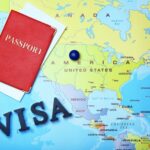Are you passionate about exploring new places, tasting exotic cuisines, and capturing unforgettable moments? If so, starting a new travel blog might just be the perfect adventure! But hold on—it’s not as simple as sharing your vacation snapshots. Running a successful travel blog takes careful planning, consistency, and a solid strategy. Whether you’re a complete beginner or someone looking to revamp your blog, this guide will cover everything you need to get started and set yourself up for success.
1. Finding Your Travel Niche
Choosing a niche is crucial for any new travel blog. A clear focus will help you stand out and attract a specific audience. Here are a few ideas to get you inspired:
- Budget travel: Perfect for sharing money-saving hacks and budget-friendly itineraries.
- Luxury travel: Ideal for those with a knack for high-end experiences.
- Adventure travel: Geared towards thrill-seekers who love extreme sports and outdoor activities.
- Food-focused travel: Perfect for travelers obsessed with cuisine and local delicacies.
- Solo travel: Tailored for independent travelers, with a focus on safety and personal growth.
Pro tip: Pick a niche that aligns with your passion and expertise, as this will make your content more genuine and engaging.
2. Setting Up Your Blog: The Basics
Now that you’ve chosen a niche, it’s time to set up your blog. You’ll need to think about hosting, domain name, and blogging platforms. Let’s break it down.
a) Choose a Domain Name
Your domain name is your brand, so choose something memorable, easy to spell, and related to your niche. For example, if your niche is solo travel, a domain like “SoloSoulTravels” could be both catchy and relevant.
b) Hosting and Blogging Platform
For a smooth blogging experience, consider using reliable hosting providers like Bluehost or SiteGround. When it comes to platforms, WordPress.org is a popular choice among travel bloggers due to its customization options and SEO-friendly features.
c) Essential Plugins
Optimize your new travel blog with plugins that boost functionality:
- Yoast SEO: Enhances on-page SEO.
- WPForms: Enables easy form creation for contact or newsletter sign-ups.
- Jetpack: Provides security, backups, and performance improvements.
3. Creating SEO-Optimized Content
Writing great content isn’t enough—you’ll need to make sure it’s search engine-friendly too. Here’s how to get started with SEO for your travel blog:
a) Focus Keywords
For every post, pick one main focus keyword (e.g., “budget-friendly travel tips”). Naturally incorporate this keyword into your title, headings, and body text.
b) Meta Descriptions
Each post should have a unique meta description to entice readers from search engine results. A well-written meta description is clear, concise, and includes your focus keyword.
c) Internal and External Links
Internal links guide readers through related content on your site, keeping them engaged longer. External links to reputable travel resources also strengthen your SEO.
d) Image Optimization
High-quality visuals are key for a travel blog, but large files can slow down your site. Use tools like TinyPNG or Smush to reduce image file sizes without sacrificing quality.
4. Building a Content Strategy
A content strategy will keep your blog focused and help you stay consistent. Here are a few content types to consider:
- Destination Guides: Highlight must-see attractions, best restaurants, and local tips.
- Travel Tips: Share insights on topics like packing, budgeting, and planning.
- Photo Diaries: Create visual-heavy posts for a more personal look at your travels.
- Travel Stories: Share personal experiences and memorable moments.
5. Growing Your Audience
Once you’ve started producing content, it’s time to build your audience. Here are some effective ways to do so:
a) Social Media Promotion
Platforms like Instagram, Pinterest, and Facebook are ideal for travel content. Create visually appealing posts, engage with your followers, and use relevant hashtags to increase visibility.
b) Email Marketing
Building an email list can help you stay connected with your readers and notify them about new content, giveaways, or exclusive travel tips. Offer something valuable, like a free e-book or travel checklist, to encourage sign-ups.
c) Networking with Other Bloggers
Networking can open up new opportunities, such as guest blogging or social media collaborations. Engaging with established travel bloggers can boost your blog’s visibility.
6. Earning Income from Your Travel Blog
A new travel blog can become a source of income if done right. Here’s how you can monetize:
- Affiliate Marketing: Promote travel products or services you use, like travel insurance, accommodation booking sites, or gear.
- Sponsored Posts: Partner with brands to create content that promotes their products or services.
- Google AdSense: Run ads on your site, earning revenue each time visitors click on them.
- Digital Products: Sell e-books, travel guides, or printable itineraries to your audience.
Frequently Asked Questions (FAQs)
Q1: How often should I post on my travel blog?
Posting consistently is key to building an audience. Aiming for one to two posts a week is a good start.
Q2: Do I need professional photography skills to start a travel blog?
Not necessarily. While high-quality photos are helpful, you can improve your skills over time or use editing tools to enhance your images.
Q3: Can I blog about multiple travel niches?
It’s possible, but focusing on one niche can help you stand out and build a dedicated audience faster.
Q4: What are some easy-to-use design tools for beginners?
Canva is a beginner-friendly tool for creating visually appealing graphics, while Lightroom is great for editing photos.
Q5: How can I drive traffic to my new travel blog?
Focus on SEO, promote your content on social media, and consider networking with other bloggers to boost your visibility.
Summary
Starting a new travel blog can be an exciting journey filled with creativity and exploration. By choosing a niche, setting up a well-optimized blog, and crafting SEO-friendly content, you’ll be on the right path to attracting readers and building a loyal audience. With consistent effort, networking, and strategic monetization, your travel blog could turn into both a personal passion and a source of income.
Authoritative Links (Plain Text)
- For SEO best practices: https://moz.com/beginners-guide-to-seo
- Image optimization tips: https://tinypng.com/
- Travel blogging tips: https://thebrokebackpacker.com/how-to-start-a-travel-blog/







